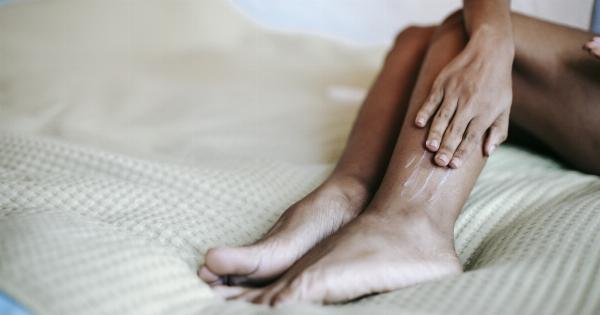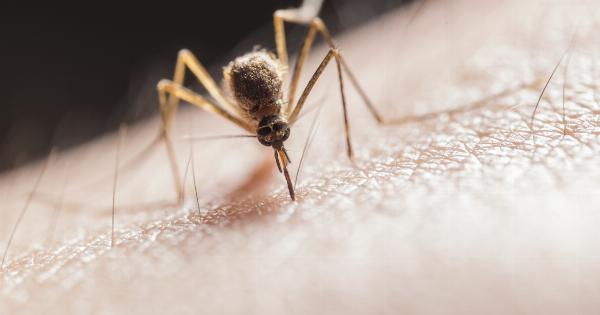Skin papillomas, commonly known as skin tags, are benign growths that often appear on the surface of the skin.
While they are usually harmless, they can be unsightly and cause discomfort, especially if they are in areas where they rub against clothing or jewelry. Understanding how skin papillomas spread can help in their prevention and removal.
What Causes Skin Papillomas?
Skin papillomas are typically caused by the growth of excess skin cells. Although the exact cause of their development is unknown, there are several factors that can increase the likelihood of their occurrence:.
Genetics
Genetics play a role in the development of skin papillomas. If you have a family history of skin tags, you are more likely to develop them as well. Certain genetic factors can make certain individuals more susceptible to these growths.
Age
Skin papillomas are more common in middle-aged and older individuals. As we age, our skin becomes more prone to various growths and changes in texture.
Hormonal changes, reduced collagen production, and increased exposure to environmental factors can contribute to their formation.
Friction and Irritation
Areas of the skin that experience frequent friction or irritation have a higher tendency to develop skin tags. Examples of these areas include the neck, underarms, groin, and eyelids.
Friction caused by clothing, jewelry, or skin-to-skin contact can stimulate the growth of skin papillomas.
Hormonal Imbalances
Imbalances in hormone levels, such as during pregnancy or in individuals with certain medical conditions, can make the development of skin papillomas more likely.
Hormones can affect the growth and texture of the skin, triggering the formation of these benign growths.
The Spread of Skin Papillomas
Skin papillomas do not spread from person to person. They are not contagious and cannot be transmitted through direct contact or exposure to fluids.
However, once a skin papilloma develops, it can grow in size over time or new ones can appear in nearby areas.
Self-Spread
Although skin papillomas do not spread by themselves, self-spread can occur when the growths are irritated or disturbed.
For example, if a papilloma on the neck is repeatedly scratched or caught on clothing, there is a possibility that it may grow larger or trigger the development of additional growths nearby.
Preventing the Spread of Skin Papillomas
While it is not always possible to prevent the formation of skin papillomas, there are measures you can take to minimize their occurrence and prevent self-spread:.
Maintain Good Hygiene
Cleanse your skin regularly and ensure you dry it properly afterward. Moisture and sweat can contribute to skin irritation and provide an environment that supports the growth of skin tags.
Avoid Friction
Avoid wearing clothes or jewelry that may cause friction on the skin. Opt for loose-fitting and breathable fabrics to prevent irritation, especially in areas prone to skin papilloma development.
Keep Skin Dry
Excessive moisture can promote the growth of skin papillomas. Ensure that your skin is kept dry, particularly in areas prone to sweating or rubbing. Using talcum powder or cornstarch can help absorb moisture and reduce friction.
Consult a Dermatologist
If you notice any skin papillomas, it is best to consult a dermatologist. They can evaluate the growths and recommend appropriate treatment options.
Your dermatologist can also provide advice on how to prevent self-spread and minimize discomfort caused by skin papillomas.
Treatment and Removal Options
There are various treatment options available for skin papillomas, depending on their size, location, and your personal preference. Some common methods for removal include:.
Cryotherapy
Cryotherapy involves freezing the skin papilloma using liquid nitrogen. This technique causes the papilloma to die and fall off within a few weeks. It is a quick and relatively painless procedure.
Cauterization
In this method, the skin papilloma is burned off using heat or electrical energy. It helps to seal the blood vessels and prevent bleeding. Local anesthesia is often used to minimize discomfort.
Excision
Excision involves the surgical removal of the skin papilloma. The dermatologist will numb the area and carefully cut out the growth. Stitches may be required, and the area will need proper care during healing.
Ligation
Ligation involves tying off the base of the skin papilloma to cut off its blood supply. This causes the growth to wither and fall off naturally. This method is less invasive and typically does not require anesthesia.
Laser Treatment
Laser treatment uses beams of light to destroy the skin papilloma. It is a non-invasive method that can target the specific area without damaging surrounding tissues. Multiple sessions may be required for complete removal.
Conclusion
Understanding how skin papillomas spread and the factors that contribute to their development can help in their prevention and removal.
While the spread of skin papillomas is limited to self-spreading in most cases, practicing good hygiene, avoiding friction, and seeking dermatological advice can aid in minimizing their occurrence and managing any existing growths.




























